Xochimilco, Ciudad de México
Biocultural Living Archive
Expanded Program of Biocultural Living Archives
Activations, tequios, exchanges, and discussions around biocultural knowledge
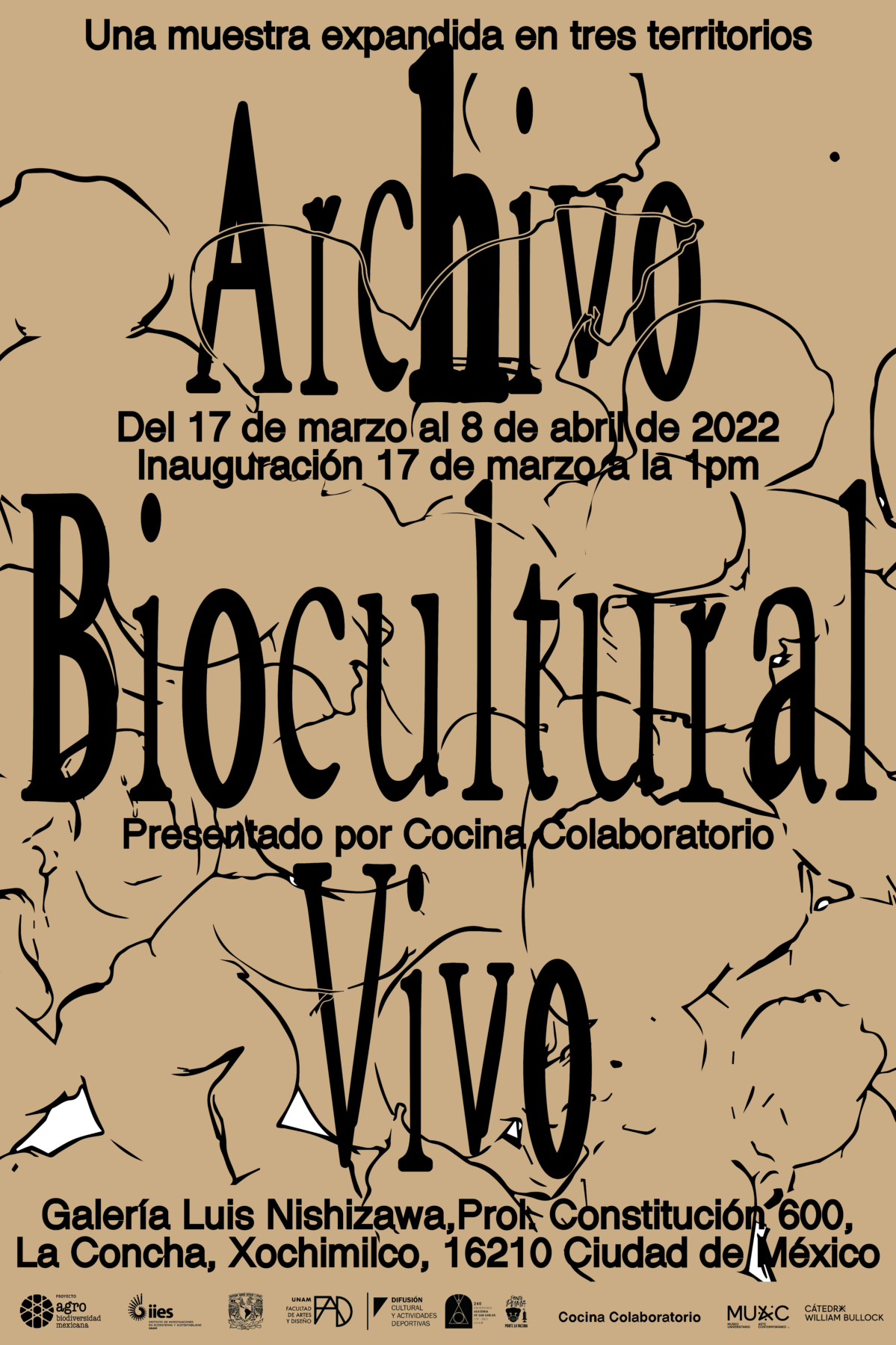
The Living Biocultural Archive is an expanded, collective, and community-based museology that connects the stories, recipes, seeds, techniques, experiences, knowledge, and local wisdom of the residents of Loma Bonita, Chiapas; Santo Domingo Tomaltepec, Oaxaca; and Xochimilco, Mexico City.
The formation of the Archive is a practice that is both situated and nomadic, living within the plots, lots, and chinampas – in their fruits and seeds, but also in the memory and voices of their inhabitants. It is both biological and cultural, reflecting centuries of interactions between nature and culture, interactions that change as landscapes and societies transform.
The archive is a portal for listening to and disseminating biocultural memory. It serves as a transdisciplinary bridge between local knowledge and academic knowledge (scientific and artistic) to weave together perspectives and explore new horizons that allow for different actions in the present and envision possible futures. Its purpose is to recognize, redefine, and preserve symbolic, cognitive, and natural memory. It also allows these memories to be contrasted with the dominant logics of food production guided by the maximization of economic benefits.
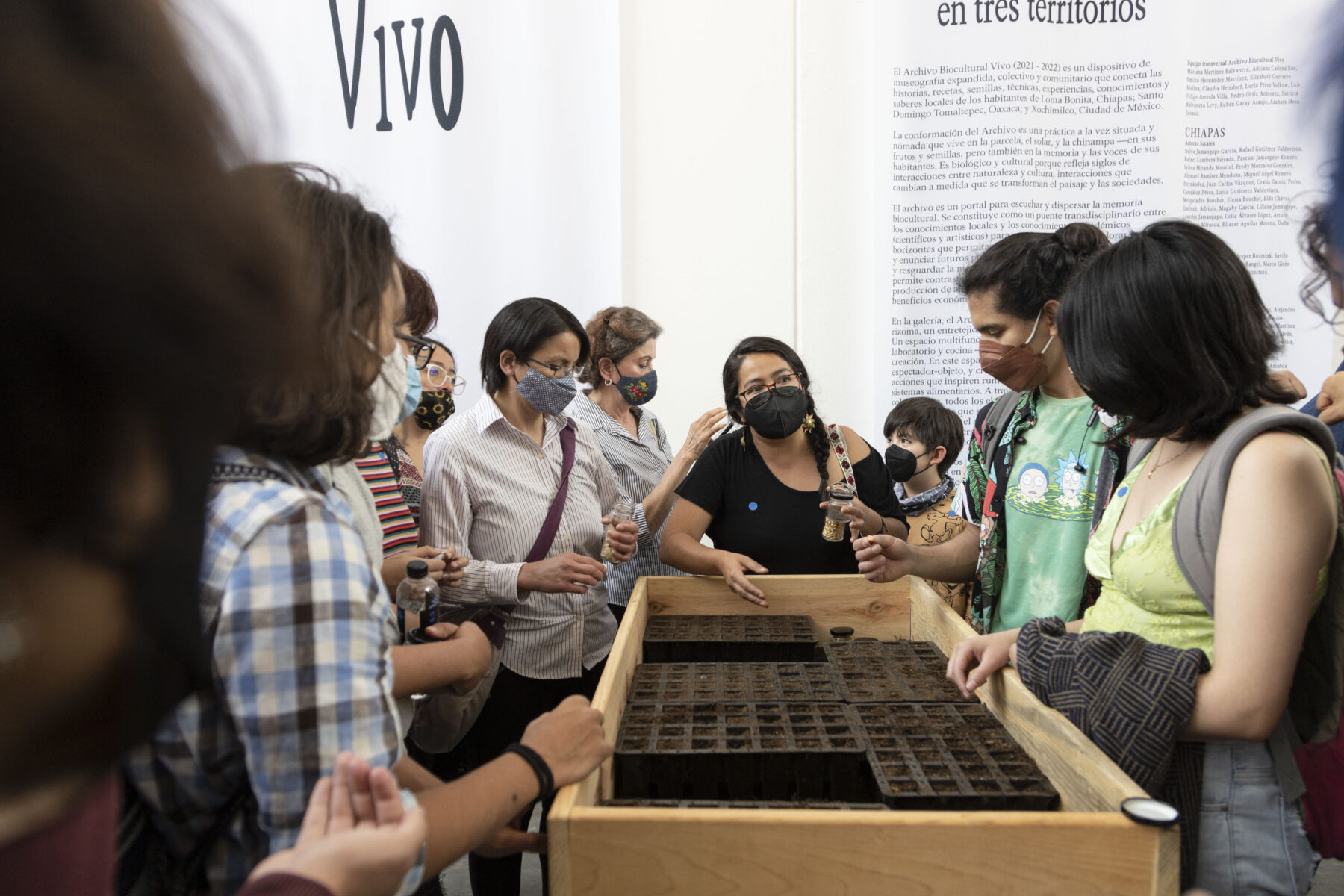
Expanded Exhibition in Xochimilco
17th to 8th march, 2022
Galería Nishizawa, FAD, Xochimilco
As part of the dissemination and expansion of the project, from March 17th to April 8th, the Biocultural Living Archive was exhibited at the Luis Nishizawa Gallery at the Faculty of Arts and Design, UNAM Xochimilco. The exhibition showcased the construction processes and logics of action of the Archive.
In the gallery, the Living Biocultural Archive was conceived as a rhizome, an interwoven network of relationships that connect and nourish each other. It became a multifunctional space, serving as a storage area, laboratory, and kitchen – a place for gathering, experimenting, and creating.
During the exhibition, the static spectator-object relationship was broken, inviting visitors to collectively create, cook, and think about objects and actions that inspire fairer and more supportive paths for food systems. Through collaborative action dynamics, all the elements that composed the exhibition and those created during the show have been gradually “un-archived” to travel and disperse throughout the public spaces of the three communities. There, they are being recontextualized and reinterpreted.
The traces of these objects, actions, and exchanges are the remnants of a process of dismantling and exodus that highlights the belonging and persistence of the Archive in the collective memory of the communities.
During the exhibition, the Nishizawa Gallery transformed into a laboratory for creation, learning, and reflection. It was activated through a weekly program that invited members of the Xochimilco community, students, academics, and the general public to participate in a reflection-action experience.
Each week, a theme related to the principles that underpin the Biocultural Living Archive was addressed, framed within a logic of critical and expanded museology.
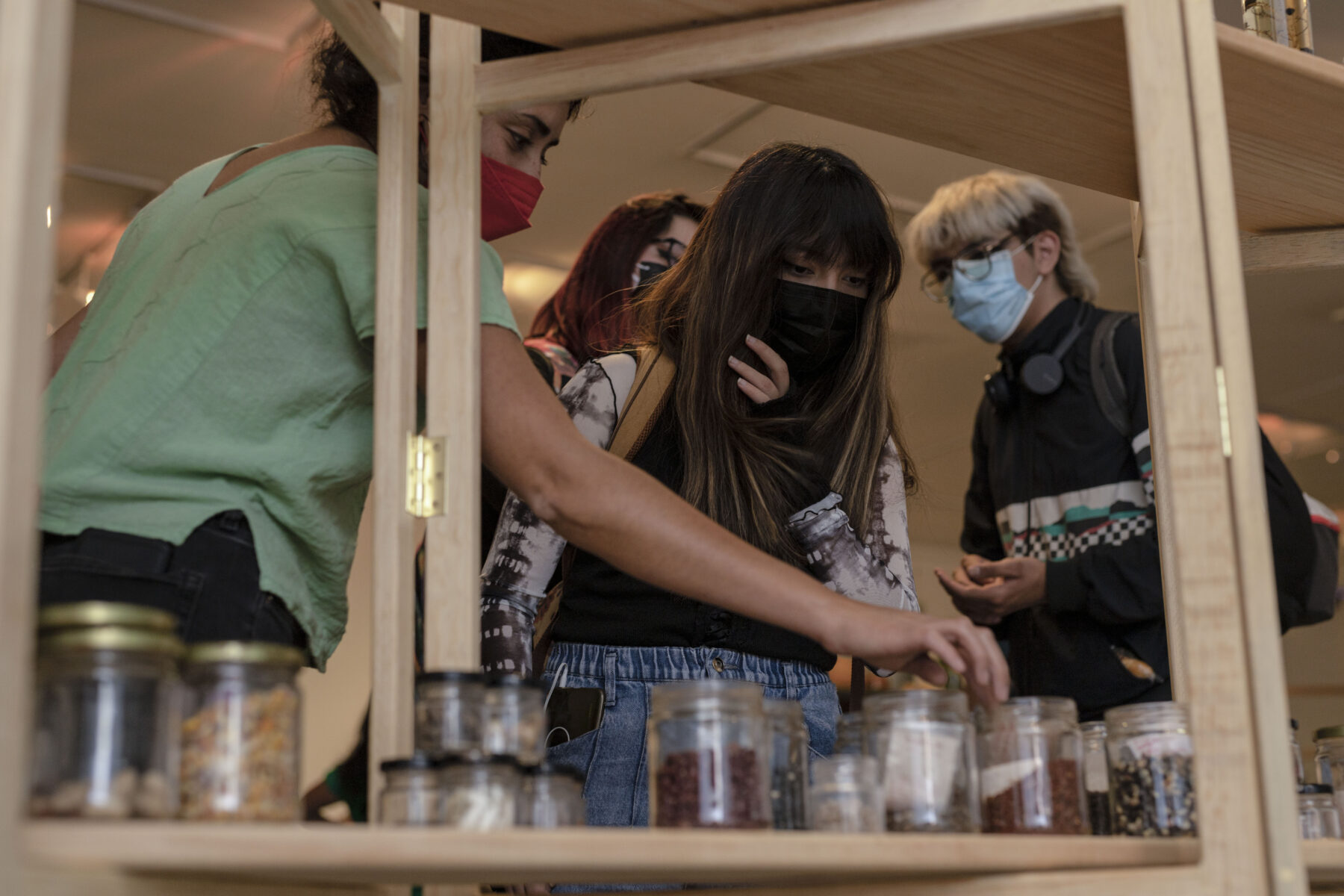
01 Almacén
The “Almacen” (storage) of the Biocultural Living Archive addresses the themes of wandering, expansion, dispersion, and distribution, which together refer to the moments of transit (movement) activated by the mobile device in the collection and exchange of biocultural knowledge with the inhabitants of the three communities. This space in the gallery functions as an extension of the living archive that exists outside, constantly growing. It presents a living investigation in the form of seeds, audio recordings, photographs, texts, videos, among others. The gallery becomes the temporary storage for these elements, which are eventually re-inserted into specific sites.
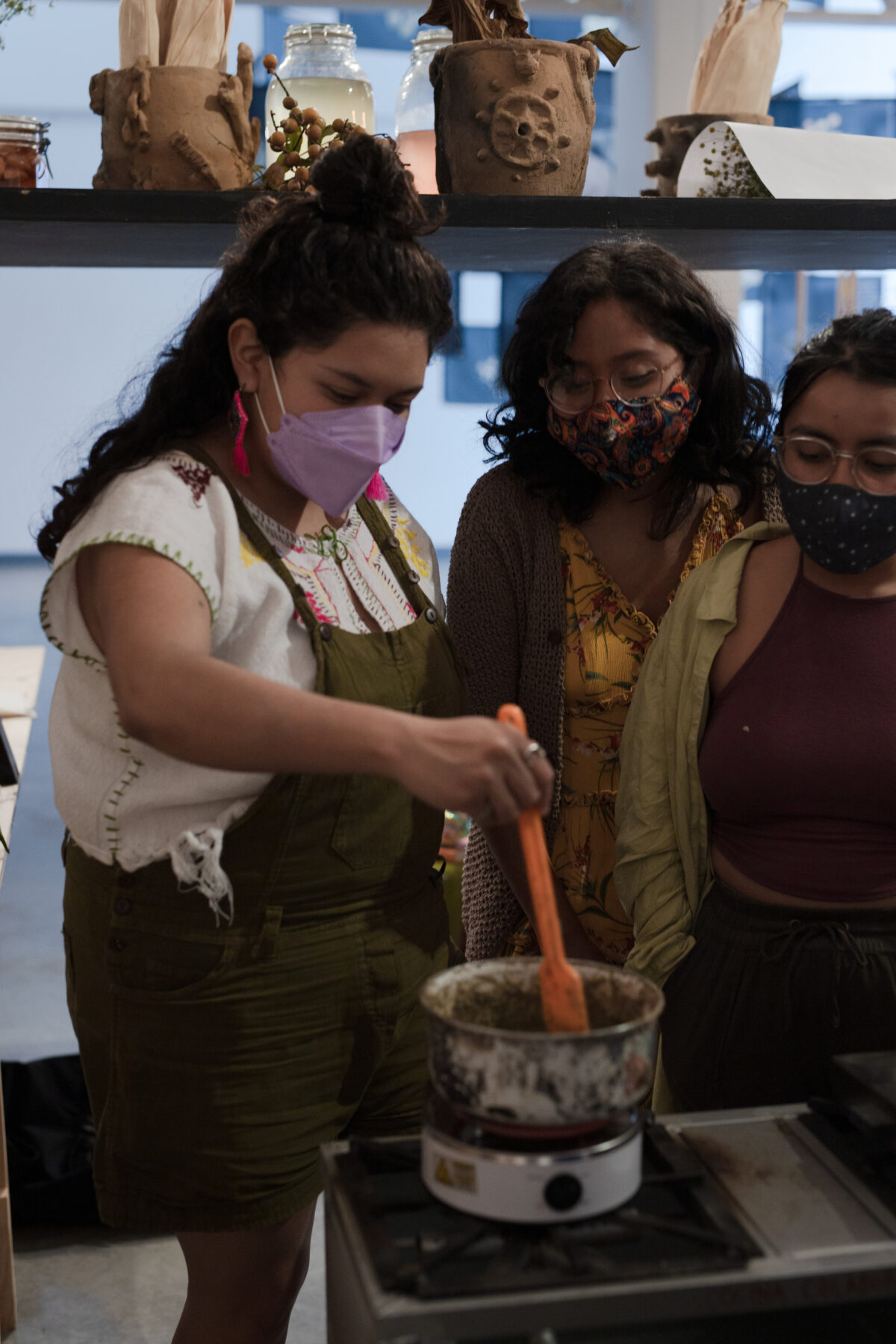
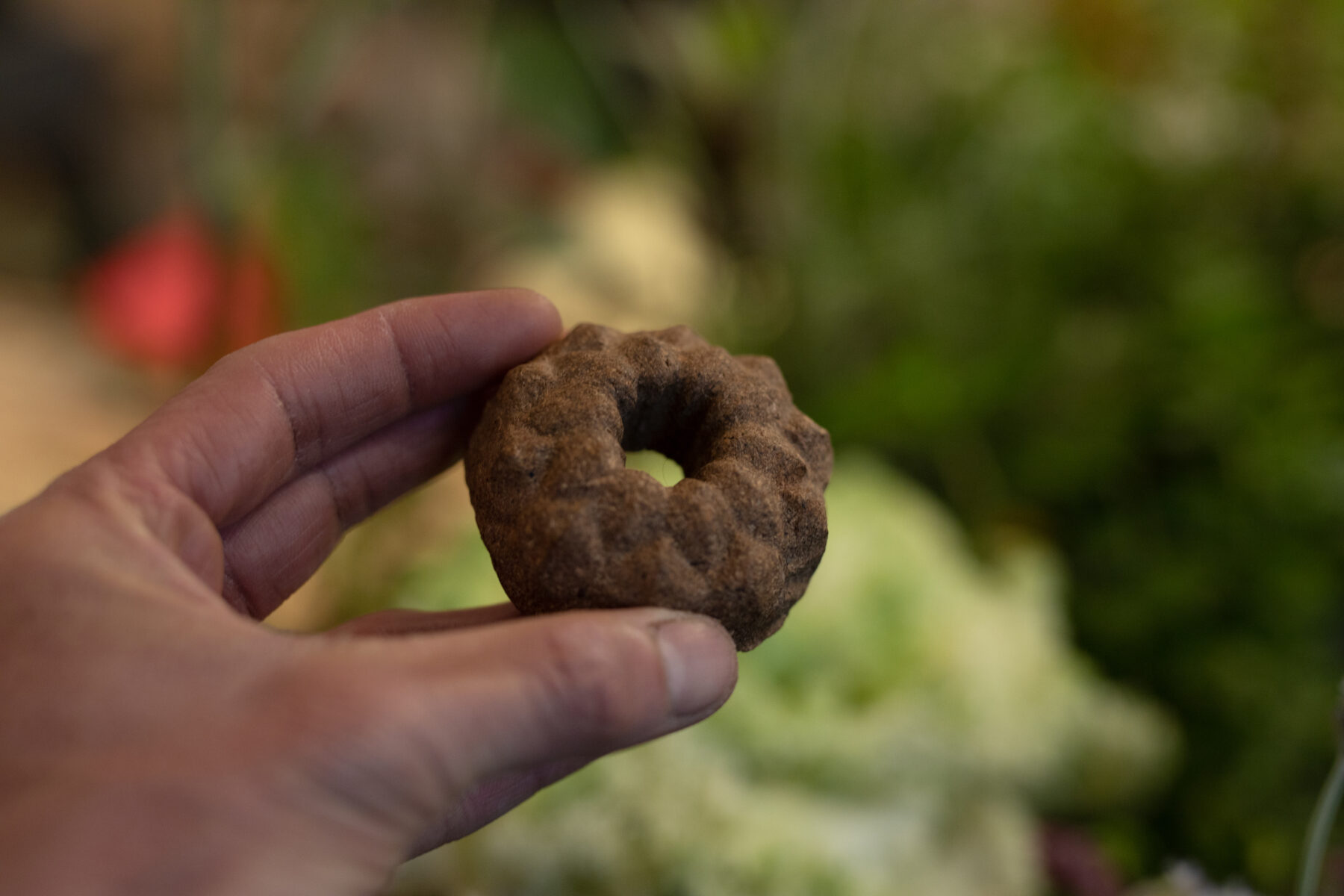
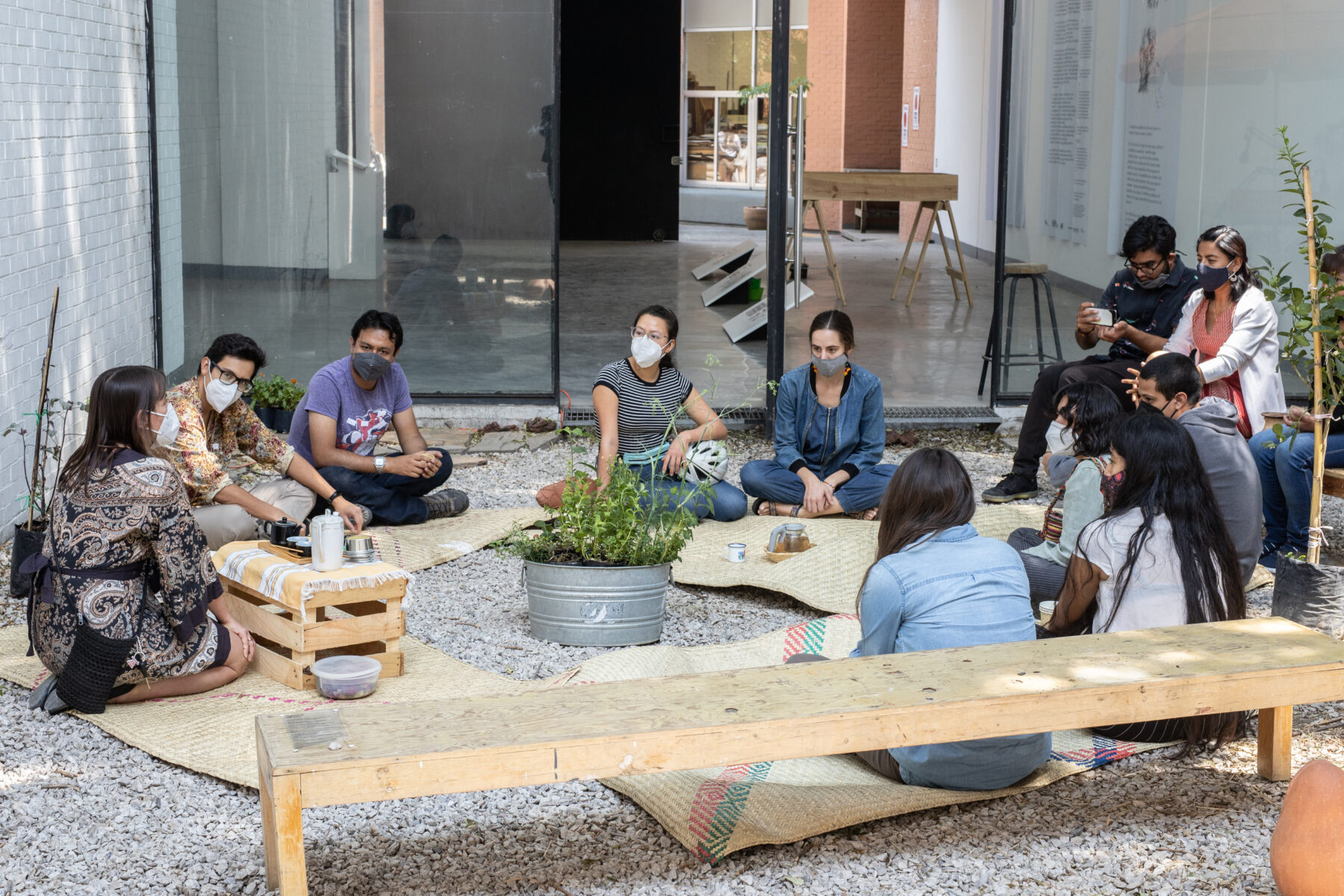

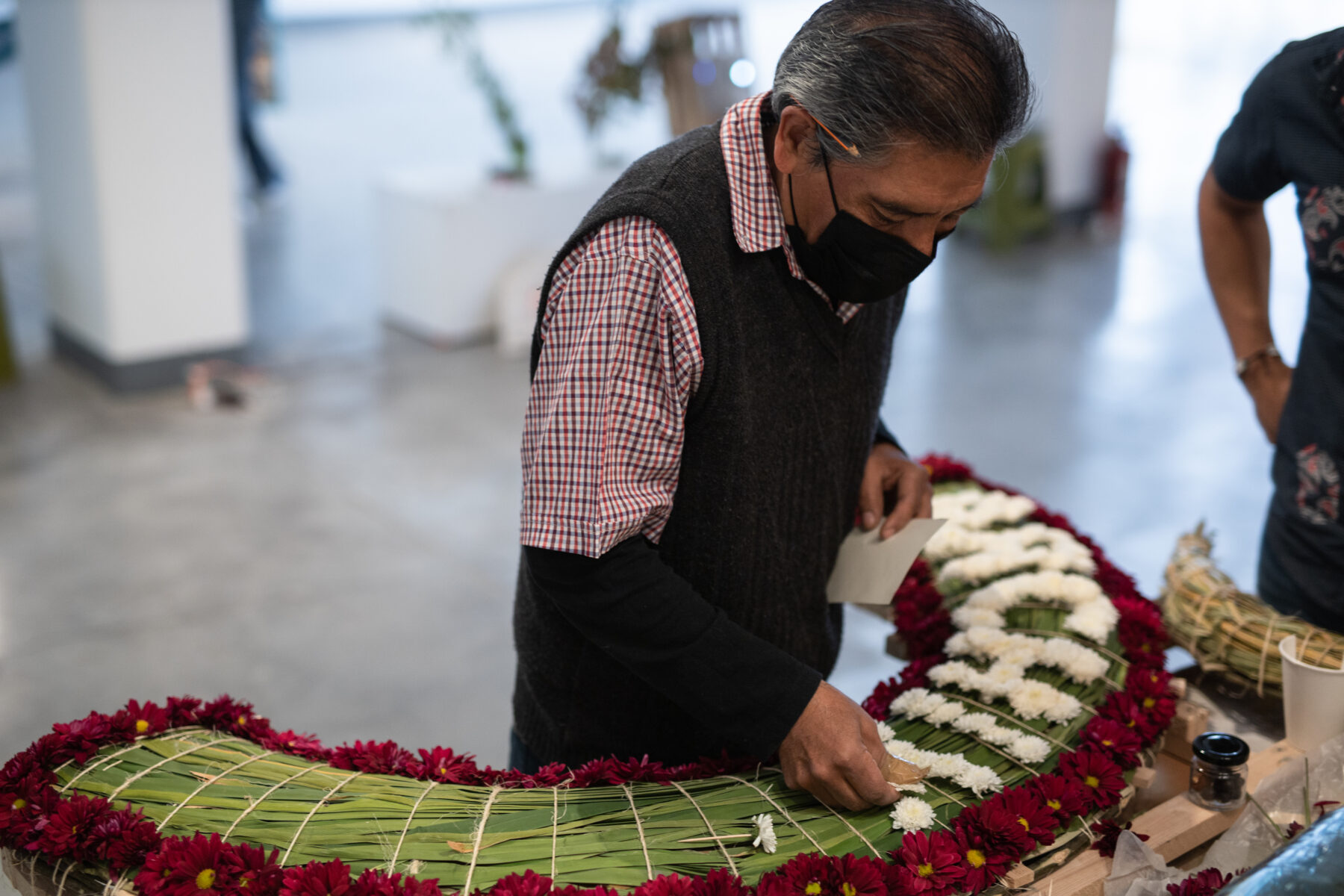
02 Laboratorio
Adaptation and embodiment are the notions at play in the Laboratory. It’s a space for action, where visitors to the exhibition, members of the Xochimilco community, and collaborators of Cocina Colaboratorio are invited to participate and co-create both inside and outside the gallery. The aim is to prototype objects and experiences for and with the people of the three communities, inspiring agentive processes and collaborative actions that pollinate or disperse the shared and co-created knowledge.

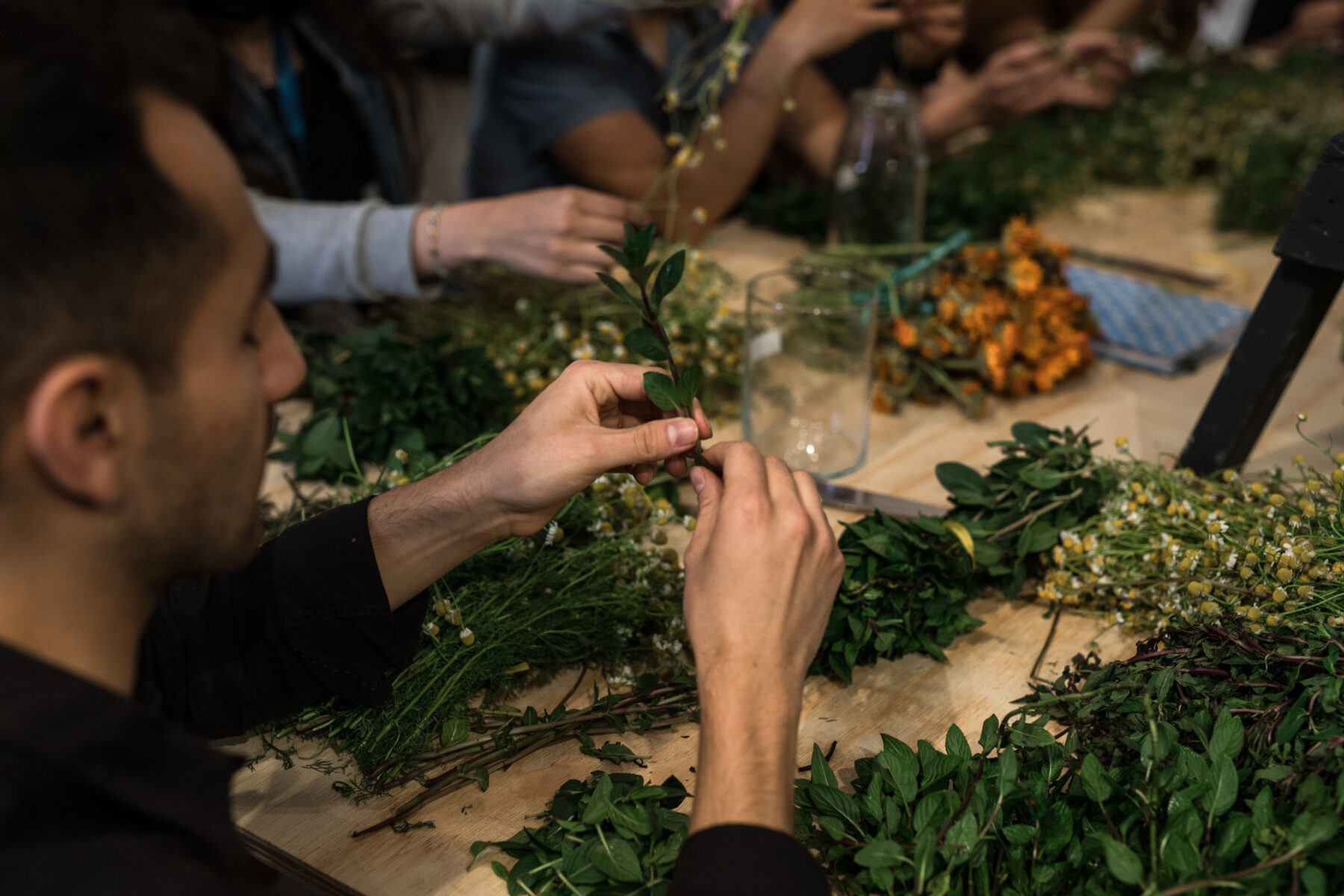
03 Cocina
The kitchen is the social space, the common place where not only food is cooked, but also stories, ideas, aspirations, initiatives, and communities. In the gallery, our meeting space is precisely the kitchen, a site activated through dialogue and physical practices that accompany the act of cooking. As we shell, peel, or select seeds, we exchange knowledge, visions, and reflections on the processes and values of the archive, memory, care, biodiversity, and resilience with guests and collaborators. It’s a space of poetic and experimental actions, much like the kitchen itself, where the time and physicality of cooking are acknowledged. A meeting place that seeks to trigger a methodology of participatory, experimental, and communal research-action that culminates in the form of a mini-publication.

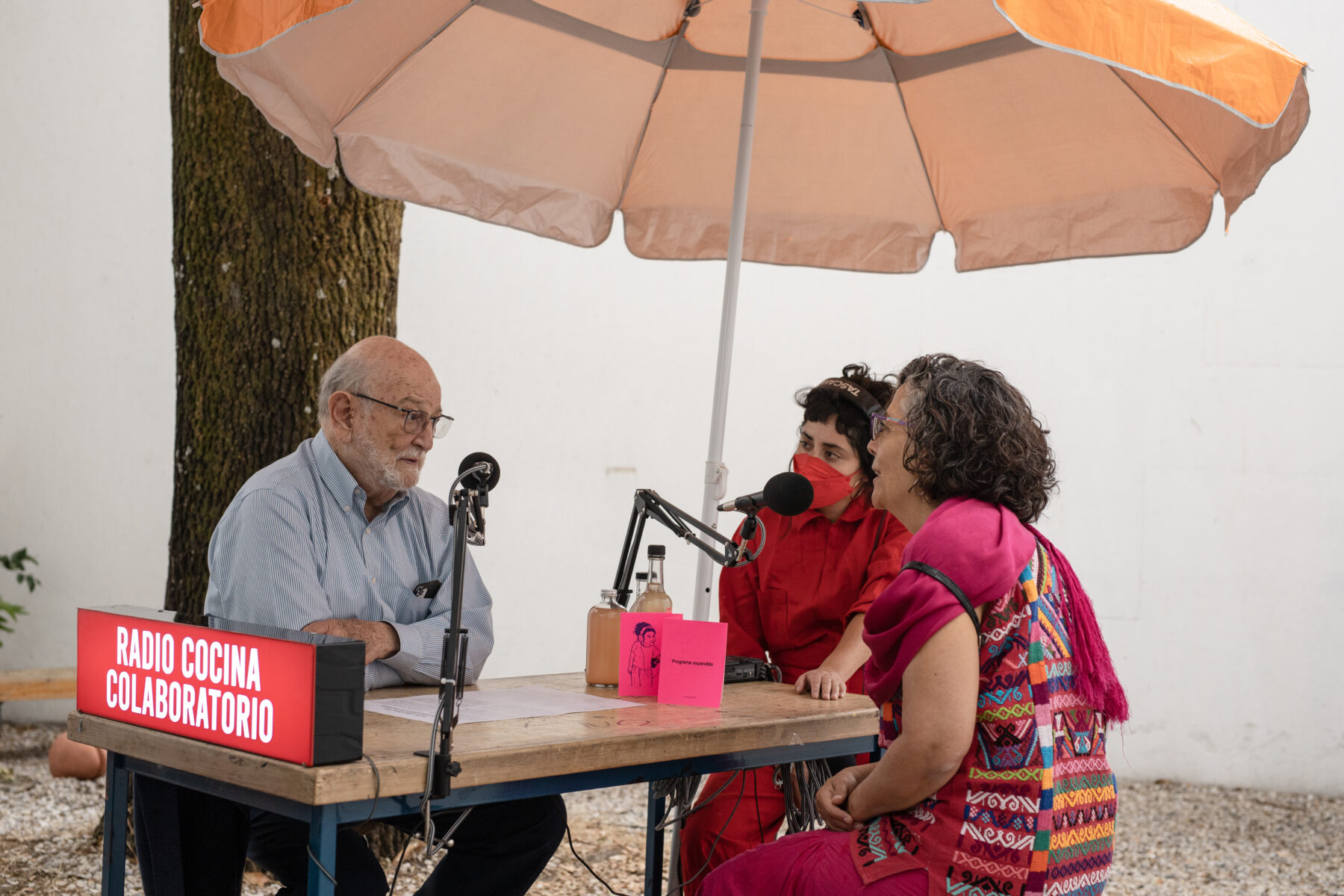
Radio Bocina
The gallery space opens up an exchange with visitors on Fridays. A Radio-Bocina, an on-site radio, is set up to chat with some special guests and visitors, and other students who want to participate.
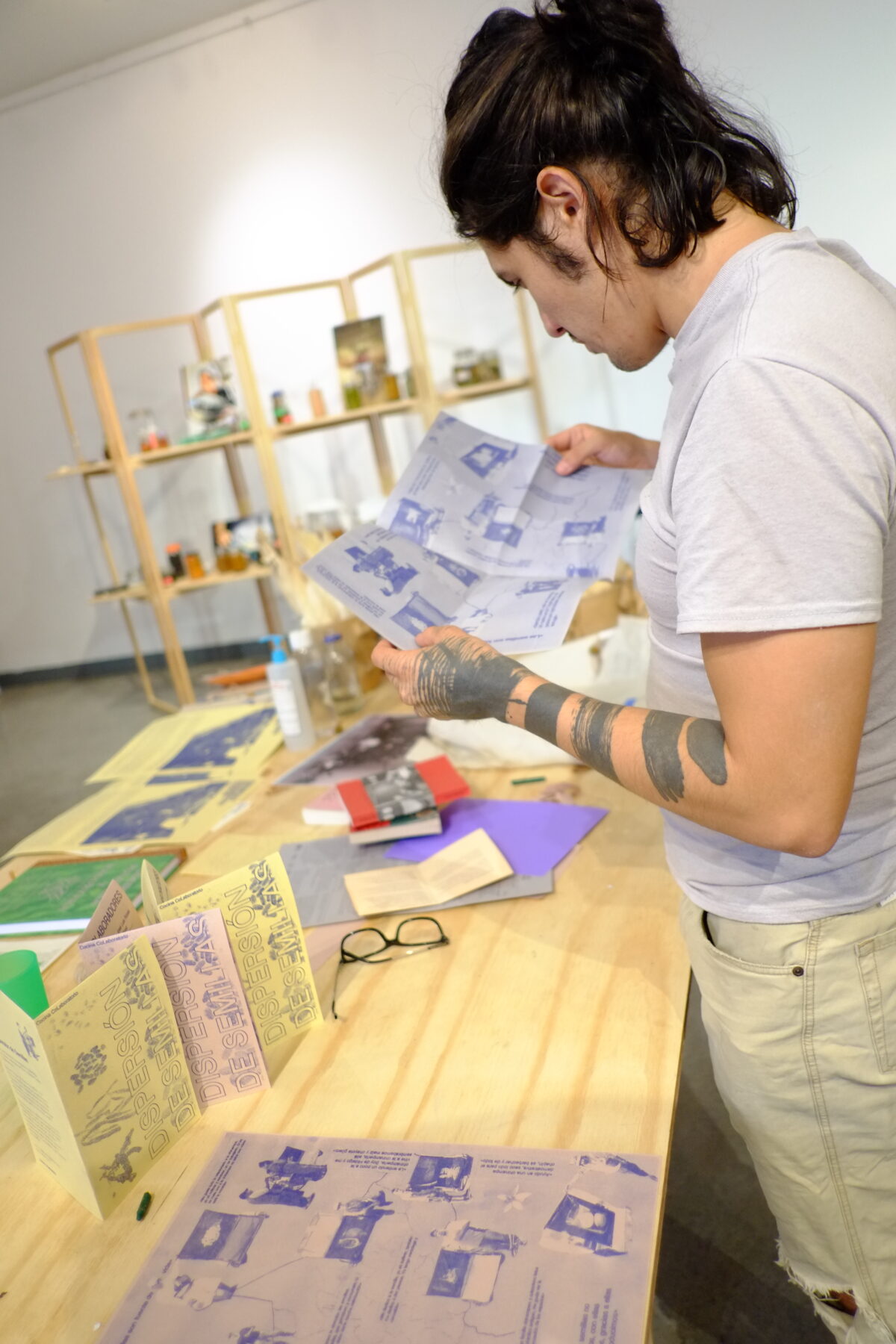
Editorial Abierta
Starting from the weekly thematic axes to propose collaborations and collective designs in the form of fanzines and/or mini publications that will serve as a bridge to the contents of the Expanded Archive.
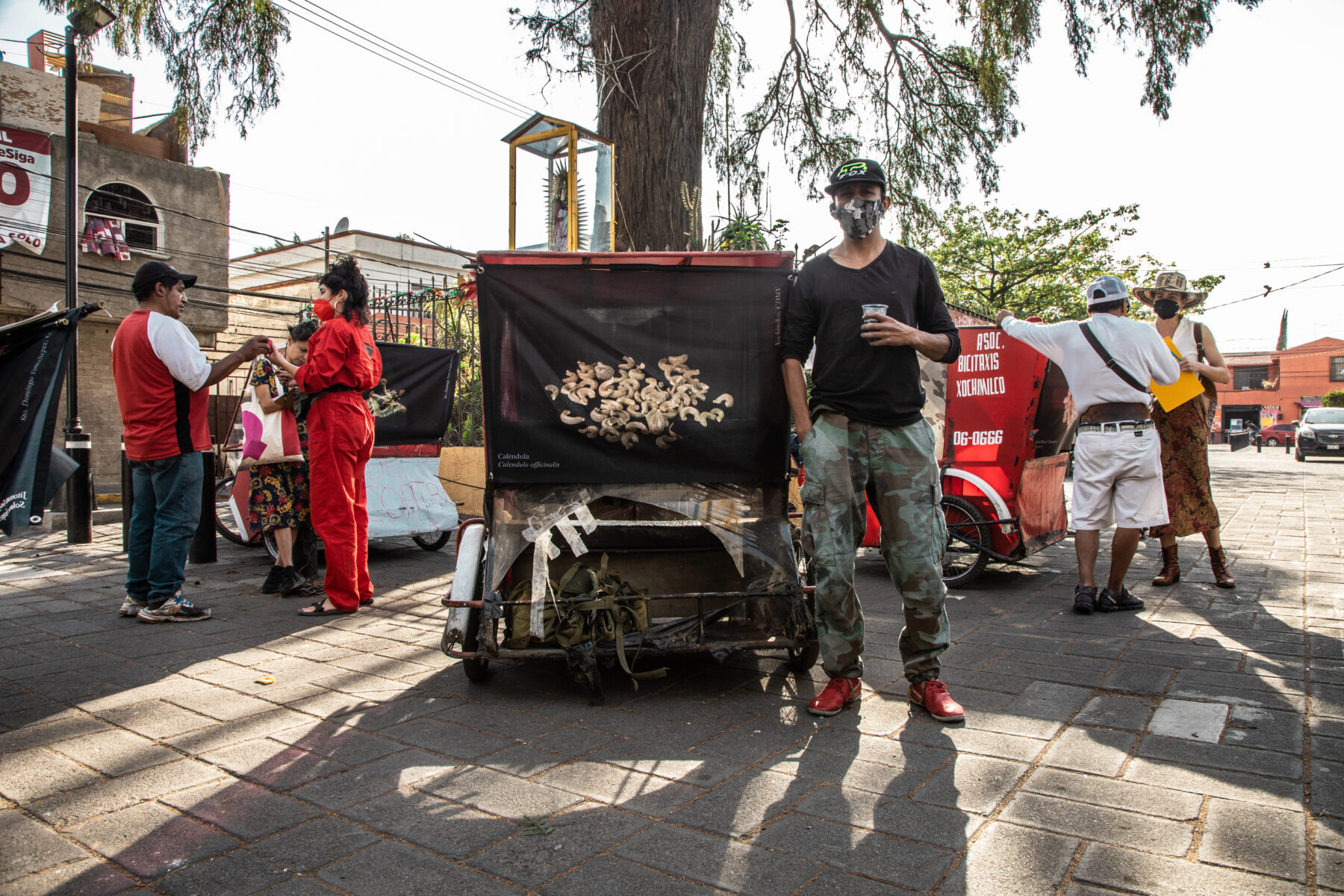


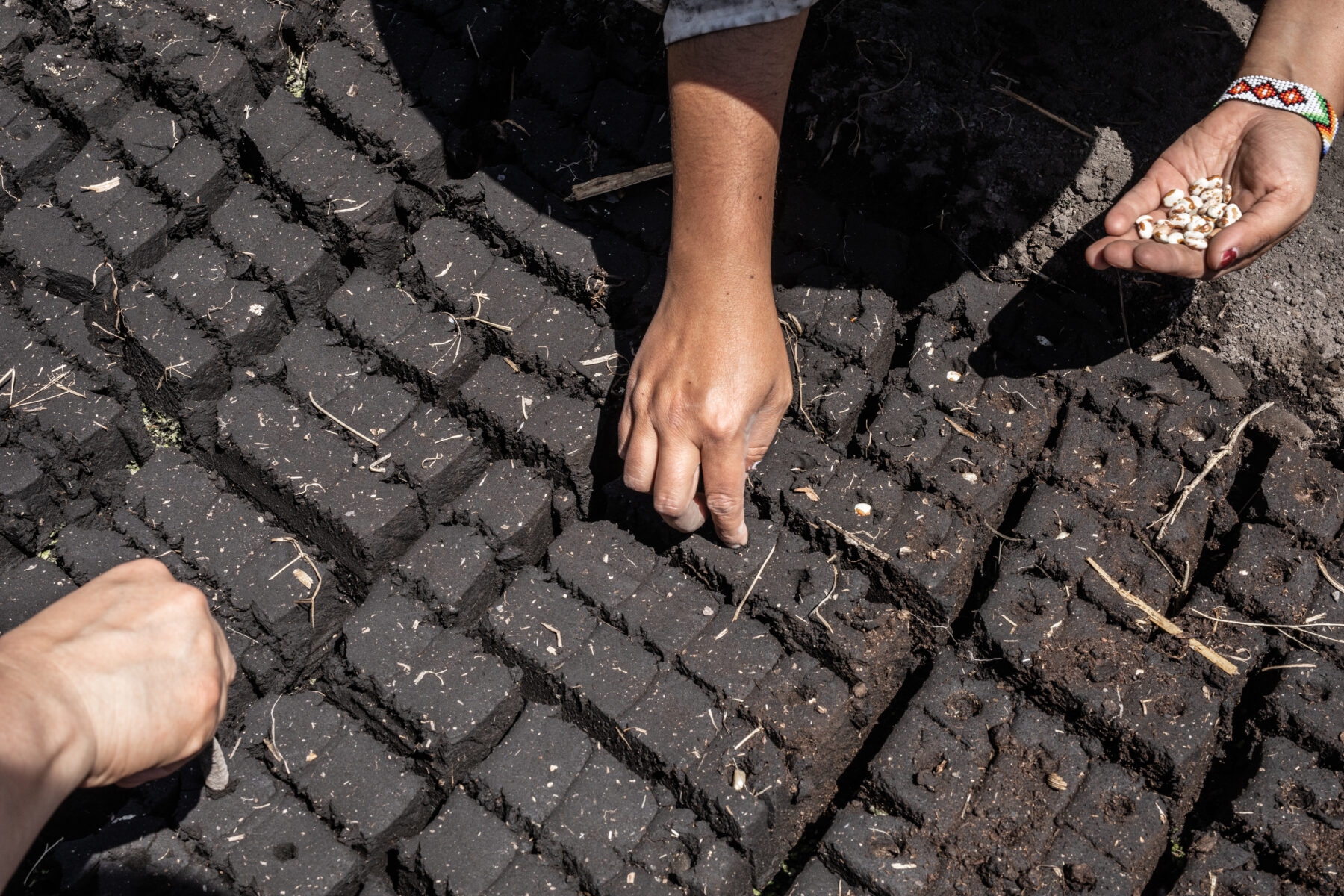
Encuentros y tequios en territorio
The meetings and Tequios (communal work sessions) in the territory took place in different plots of Xochimilco, activating actions such as building, cleaning, or planting through collective efforts. As well, public art activations helped disperse the Archive content into the streets.
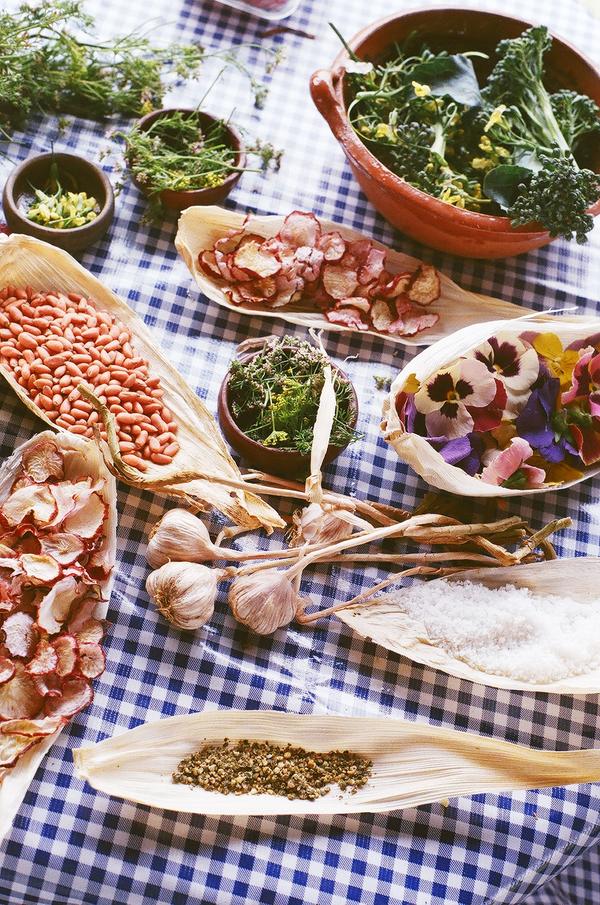
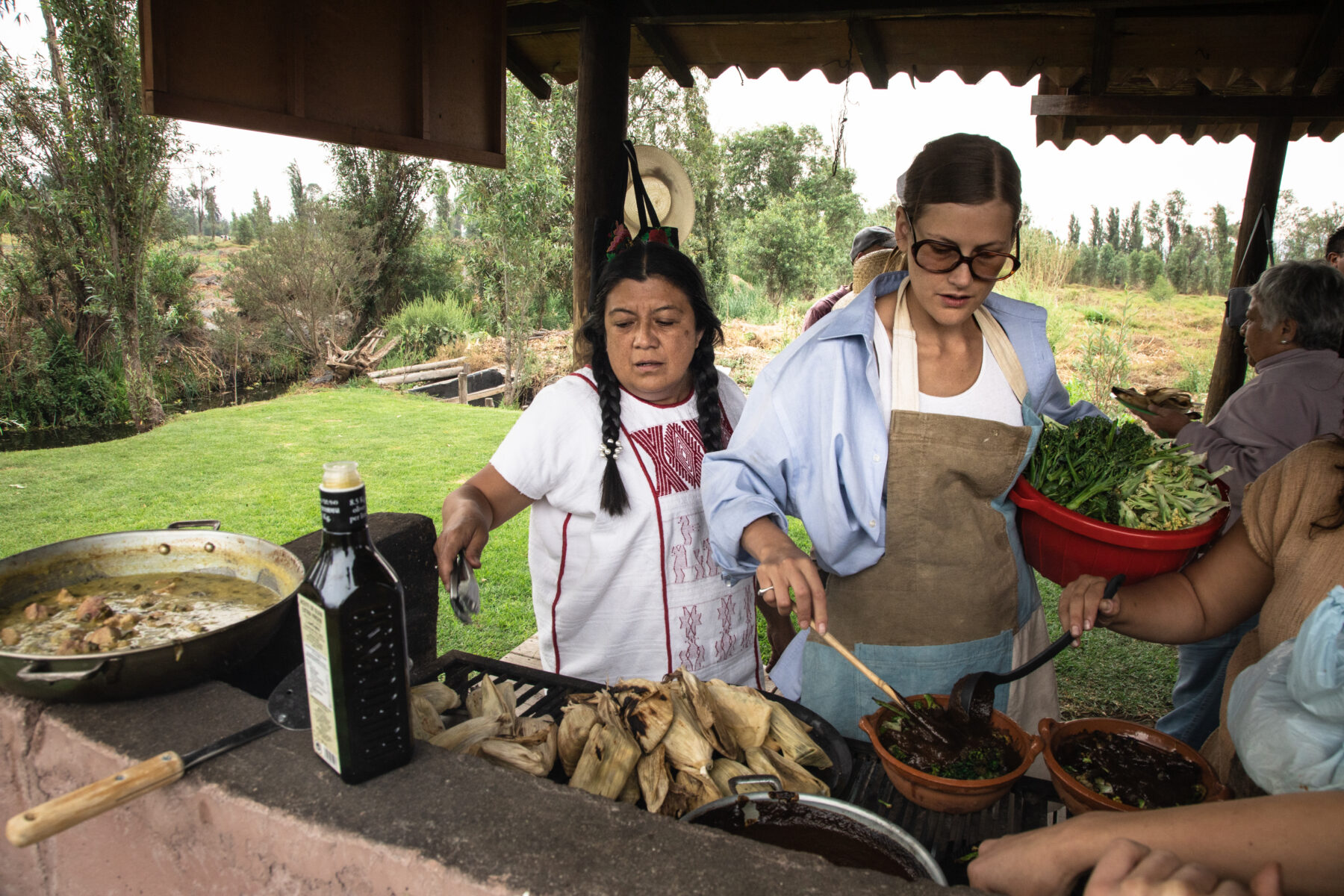
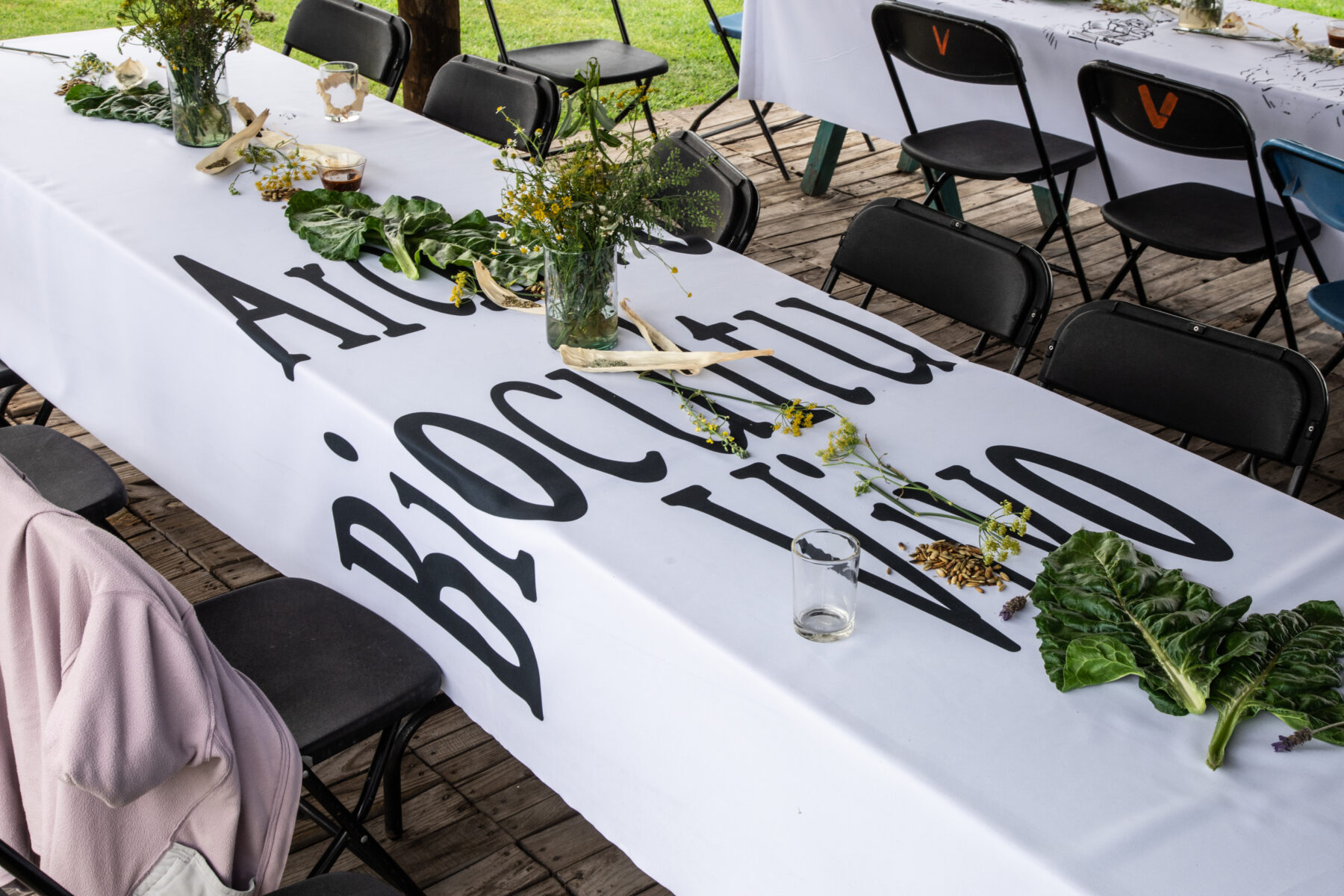
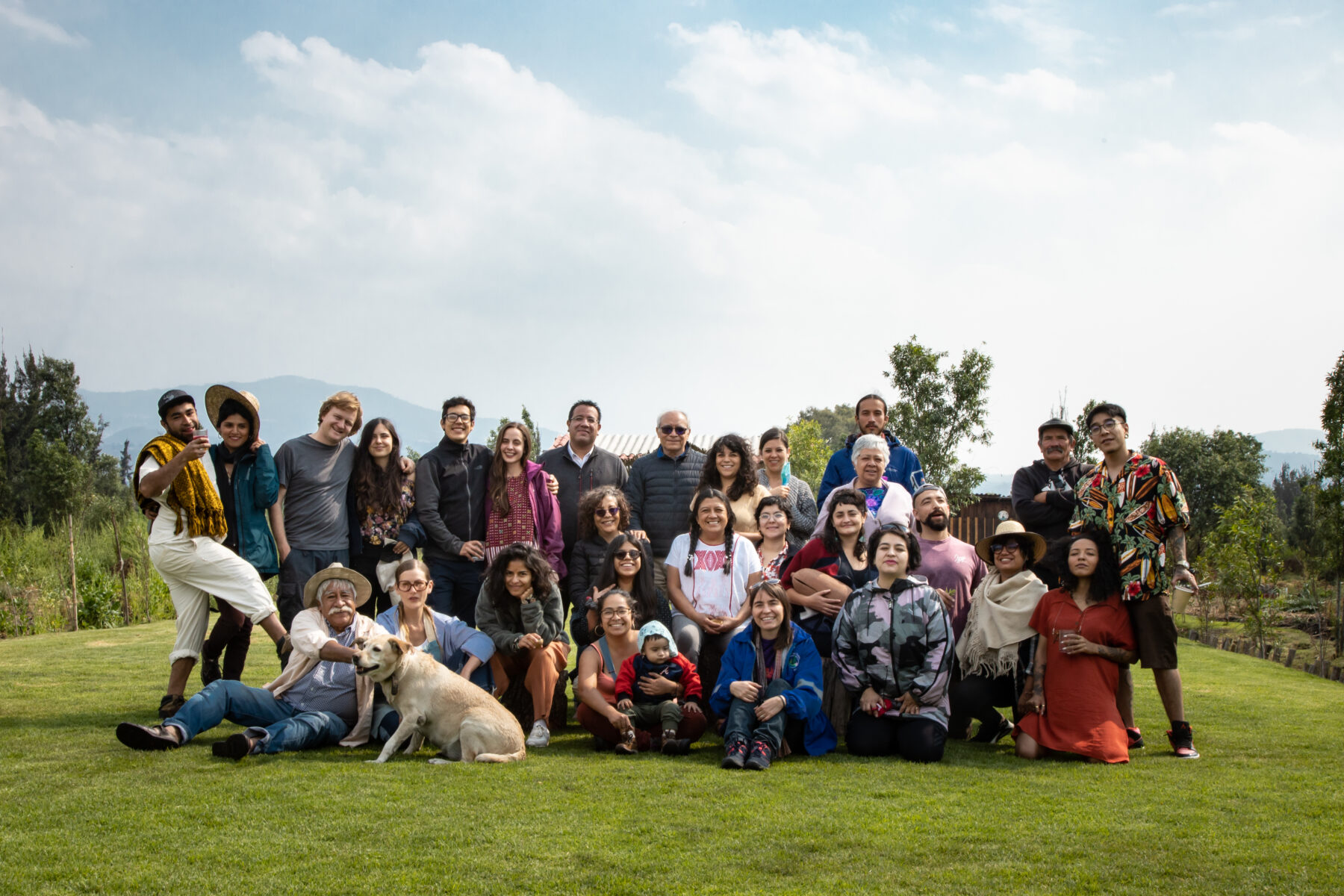
Acknowledgments
This project is made possible thanks to the support of the National Autonomous University of Mexico (UNAM) through the PAPIIT project (IV200120) granted to the Institute of Ecosystems and Sustainability Research (IIES); CONABIO through the Mexican Agrobiodiversity Project; Wageningen University (2018, 2020-2021) through the Forefront program, Reserbos Project, INREF-FOREFRONT-WUR; and the University Museum of Contemporary Art through the William Bullock Critical Museology Chair 2020.
Curaduría y Museografía (offline + online)
Design, concept, and curation: Cocina CoLaboratorio
Curatorial assistance: Pedro Ortíz Antoranz
Graphic design: Moriz Oberberger
Design and web programming: The Anderen
Invited Guests to the Program
Kitchen Tables (cocina):
Paola de Anda (Huerto Esmeralda)
Liza Covantes (Proyecto Agrobiodiversidad Mexicana)
Sarah Bak Geller (UNAM)
Nora Estrada (Cocinera Tradicional Xochimilca)
Kotik Villela y Salvador Santana (La Bandurria Marcha)
Mónica Amieva (IIE-UNAM)
Ehecátl Morales (Plan Acalli)
José Miguel González Casanova (FAD)
Santiago Robles (FAD)
Raúl Mondragón (Colectivo Ahuejote)
Martina Manterola (colectivo amasijo)
Ana de Luca (CONACYT)
Daniel Perez y Gabriela Muñoz (FAD)
Laboratories:
Laboratorio Lacustre
Leonardo Guerra
Michelle Buerba
Tanya Martínez
Grace Gloria Denis
Maestro Lorenzo Mendoza
Editorial Abierta:
Erick Cruz Esquivel (Colectivo el Día de la Impresión)
María de Guadalupe Sánchez Estrada
Rubén Cerrillo García
Adriana Raggi Lucio (La Zinería)
Radio:
José Sarukhan (CONABIO)
Patricia Balvanera (UNAM)
Margaux Schwab (FoodcultureDays
Gabriela Pech (Sustainable Commons)
Visit also:
Cocina Colaboratorio is a transdisciplinary collective that brings together communities of people dedicated to agriculture, cooking, art, design, architecture, and research around the kitchen table to exchange knowledge, design, and implement actions for a sustainable food future. It is a laboratory of collective creation and joint experimentation that seeks to reconcile the care of nature with food production and diverse ways of life.
In this section, you will find stories of actions in three territories through three arenas: the Kitchen, the Experimental Plot, and the Living Biocultural Archive. We also share research-action projects, public programs, and exchanges through Extended Table, as well as stories about resources for other collectives.